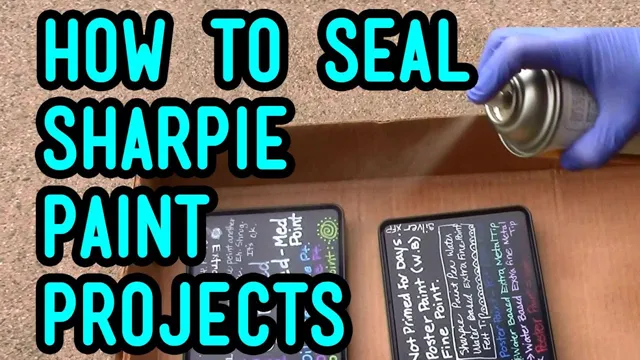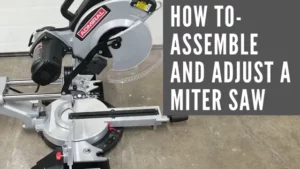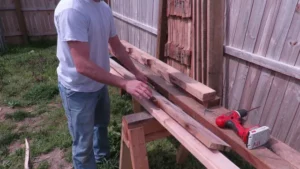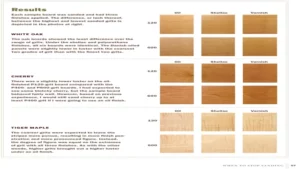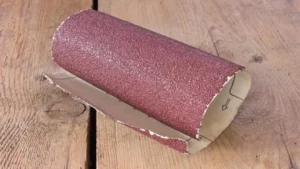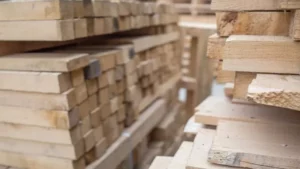Are you looking for a fun and creative way to decorate your wooden furniture or signs? Sharpie markers are a great way to add a personal touch to your woodwork and make it stand out. However, without proper sealing, the marker can easily fade or smudge, leaving you with a less than perfect finish. That’s where sealing comes in.
In this blog post, we’ll discuss how to seal Sharpie on wood, including what materials you’ll need and step-by-step instructions to achieve a long-lasting finish. So grab a cup of coffee, get your Sharpies ready, and let’s get started!
Materials Needed
If you’ve ever wanted to customize wood with vibrant Sharpie markers, you might be wondering how to seal your work to keep it from fading or smudging. Luckily, sealing Sharpie on wood is a fairly easy process. You’ll need a few supplies to get started: a sealer, such as Mod Podge or a clear spray sealant, a small paintbrush, and of course, your Sharpie artwork.
First, make sure the Sharpie ink is completely dry. Next, use the paintbrush to apply a thin layer of sealer over the entire surface of your artwork. It’s important to apply the sealer evenly, but don’t overdo it.
One thin layer should do the trick. Allow the sealer to dry completely, which can take anywhere from a few hours to overnight depending on the product you’re using. Once it’s dry, your Sharpie artwork is protected and ready to be displayed!
-Wooden Surface
If you are looking to create a warm and inviting wooden surface in your home, there are a few materials you will need to make it happen. First and foremost, you will need the wood itself. There are many types of wood available, each with its own unique characteristics and properties.
Oak, maple, cherry, and walnut are all popular choices, but there are also many other options to choose from. You will also need some basic tools, including a saw, hammer, nails, and sandpaper. Depending on the complexity of your project, you may also need a drill, screws, and other specialized tools.
Additionally, you’ll need a finishing material, such as paint, stain, or varnish, to protect and enhance the natural beauty of the wood. When selecting your materials, it’s important to keep in mind the intended use of the wooden surface. For example, if you are creating a dining table, you will need to select a wood that is durable and able to withstand frequent use.
Similarly, if you are building a wooden countertop, you will need to choose a material that is resistant to stains and spills. No matter what type of wooden surface you are planning to create, the right materials and tools are essential for achieving the desired result. By taking the time to carefully select your materials and plan out your project, you can ensure that your wooden surface will be a beautiful and functional addition to your home.
So what are you waiting for? Start gathering your materials and get started on your wooden surface project today!
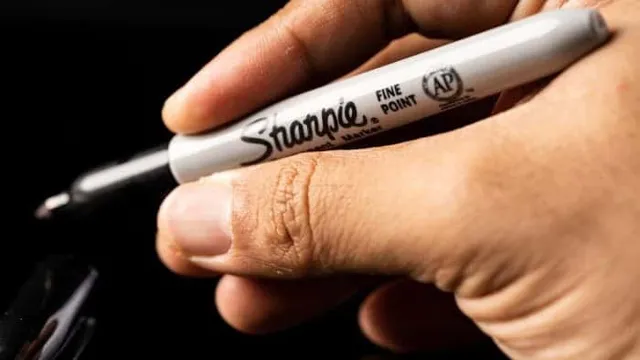
-Sharpie Marker
Thinking of adding some color to your artwork? Well, a Sharpie marker can do the trick! It’s one of the most popular tools used by artists, especially in creating bold and striking designs. Besides, it’s versatile and can write on almost any surface, from paper to metal and even plastic. However, to achieve excellent results, you need to know the right materials to use.
Firstly, get a set of high-quality Sharpie markers in different colors and tips according to your artwork’s requirements. Secondly, depending on the type of surface you’ll be working on, you’ll need to grab a primer or surface conditioner before you start so that the ink doesn’t smear or fade away. Lastly, it’s always a good idea to have some rubbing alcohol and cotton swabs handy just in case.
So, now that you have everything you need, let your creativity flow and see the magic of the Sharpie marker!
-Clear Sealant Spray
If you’re looking for a clear sealant spray to protect your project, you’ll need a few materials to get started. Firstly, you’ll need a good quality clear sealant spray that is suitable for your specific project. You can find clear sealant sprays that are water-resistant, UV-resistant, or heat-resistant, depending on the type of project you’re working on.
Secondly, you’ll need to prepare the surface you’re planning to seal properly. This can involve cleaning the surface, sanding it down, or applying a primer to ensure the sealant adheres well. Additionally, make sure you have protective gear such as gloves, goggles, and a mask to ensure safety during sealing.
With the right materials in hand, you can achieve a smooth and protective finish for your project with ease.
Steps to Seal Sharpie on Wood
If you’ve ever used a Sharpie to draw on wood, you know how important it is to seal your masterpiece to preserve the ink. Thankfully, the process is quite straightforward. First, make sure your wood surface is clean and dry.
Then, use a clear spray sealant like polyurethane or acrylic to coat the area you drew on. Be sure to hold the can about 6-8 inches away to get an even coat without drips. Wait for the sealant to dry completely according to the instructions on the can.
Once the sealant is dry, your Sharpie artwork will be protected from water damage and smudging. So now you can feel confident in showing off your handiwork to friends, family, and guests without worrying about any damage to your beautiful creation. Remember to test the sealant on small areas first before applying to the entire surface.
With these simple steps, you’ll be able to seal your Sharpie artwork on wood like a pro!
1. Clean Wood Surface
If you’re looking to seal Sharpie on wood, the first step is to ensure that the wood surface is clean. This means removing any dirt, dust, or debris that may be on the surface using a soft cloth or brush. You can also use a cleaning solution specifically designed for wood surfaces to get rid of any stubborn stains or marks.
Once the surface is clean, give it time to dry completely before moving on to the next step. This will help ensure that the sealant adheres properly and doesn’t peel or flake off. By taking the time to properly prepare the wood surface, you’ll be setting yourself up for success when it comes to sealing Sharpie on wood.
2. Draw Design with Sharpie Marker
If you’re looking to seal a Sharpie marker design on wood, there are a few simple steps you can follow to ensure it stays put for the long haul. First, draw your design using a Sharpie marker and allow it to dry completely. Once the ink is dry, use a clear sealer spray to coat the entire surface of the wood, including the Sharpie design.
Be sure to follow the manufacturer’s instructions and apply a few thin coats, allowing each coat to dry completely before applying the next. Alternatively, you can use a brush-on sealer if you prefer. This method may take longer, but it can provide more precise coverage.
When using a brush-on sealer, be sure to use a light touch and avoid going over the same area multiple times, as this can cause the Sharpie ink to smudge. With a bit of patience and the right technique, you can easily seal a Sharpie marker design on wood and create a lasting work of art that is sure to impress.
3. Let Sharpie Dry Completely
If you’re wondering how to seal sharpie on wood, there are a few steps you need to follow to ensure a long-lasting finish. First, make sure to clean the surface of the wood thoroughly, removing any dirt or debris. Next, use a quality sharpie brand marker to make your design or writing.
Once you’re done, let the sharpie dry completely for a few hours before proceeding. This step is crucial because if you don’t let it dry, the ink may smudge or bleed. After the sharpie is dry, apply a coat of sealant or clear varnish on top of the marker.
This will protect the ink from water damage and fading due to sunlight. It’s important to use a high-quality sealant for the best results. Finally, let the sealant dry completely according to the manufacturer’s instructions.
By following these simple steps, you can ensure that your sharpie design on wood will look great for years to come.
4. Apply Clear Sealant Spray
If you’re looking for a way to seal your sharpie design on wood, then applying a clear sealant spray is a crucial step to ensure it stays protected and looking great for years to come. The sealant helps to guard against any moisture or sun damage that can cause your design to fade or bleed over time. Before applying the spray, make sure the wood is clean and dry so that the sealant adheres properly.
Hold the can about 6-8 inches away from the surface and apply a light, even coat. Let it dry for a few hours before applying a second coat. Repeat this process until you have 3-4 layers of sealant on your wood.
It’s important to apply multiple coats for maximum protection. Once you’ve finished, give it a few more hours to dry completely. Then, you can enjoy your sealed sharpie design on wood with peace of mind, knowing that it’s protected from any damage.
5. Let Sealant Dry Completely
If you are looking to preserve a Sharpie design on wood, sealing it is essential. While Sharpie ink is permanent, it can fade and smudge over time if not adequately protected. Here are the steps to seal Sharpie on wood effectively:
Clean the surface: Ensure that the surface of the wood is clean to prevent any dirt or dust from sticking under the sealant. Apply primer: Use a high-quality primer to help the Sharpie ink adhere better to the wood surface.
Draw your design: Once the primer has dried, use your Sharpie to create your design.
Apply a sealant layer: Use a spray or brush-on sealant to coat the surface. Ensure that you have an even layer, and avoid over-applying, as it could cause the ink to bleed.
Let sealant dry completely: Allow the sealant to dry for at least 24 hours before moving or touching the surface. Sealing your Sharpie design on wood will protect it from moisture, dirt, and fading, allowing it to last for years to come. Make sure to follow these steps carefully, and your creation will be safe and beautiful.
Tips for Sealing Sharpie on Wood
If you’re wondering how to seal Sharpie on wood, there are a few things you can do to ensure that your artwork stays intact for as long as possible. First, make sure that the surface is clean and dry before you start drawing. You should also use a fine-point Sharpie marker, as these tend to have a more durable ink that is less likely to bleed or fade over time.
Once you’ve finished your design, you can use a clear acrylic sealer to protect the ink. Be sure to choose a sealer that is specifically designed for use on wood, as some may not adhere properly or could even damage the surface. Apply several thin coats, allowing each one to dry completely before adding another.
This will help to build up a protective layer without causing any smudging or smearing. Overall, by taking a few extra steps to seal your Sharpie on wood, you can create lasting artwork that you can enjoy for years to come.
– Use Light Coats of Sealant
If you’re looking to preserve your Sharpie creations on wood, it’s important to use sealant to prevent the ink from fading or smudging. However, it’s crucial to apply the sealant in light coats to avoid any clumping or over-saturation that could ruin your design. Applying several thin coats of sealant will also allow it to dry more evenly and prevent any bubbles or drips from forming on the surface.
Remember to let each coat dry completely before applying the next. By using light coats of sealant on your Sharpie design, you’ll be able to preserve it for years to come and keep it looking sharp.
– Test Sealant on a Small Area First
If you’re planning to seal Sharpie on wood, one of the best tips is to test the sealant on a small area first. This will help you determine if the sealant will react with the Sharpie ink and cause it to bleed or fade. It’s important to choose the right kind of sealant for the job.
A water-based sealant is recommended as it will not dissolve the Sharpie ink. It’s also crucial to apply the sealant evenly and use a brush with soft bristles to avoid smudging or streaking the Sharpie ink. Additionally, it’s best to wait for the Sharpie ink to dry completely before applying the sealant.
By following these tips, you can ensure that your Sharpie artwork on wood will remain vibrant and long-lasting.
– Apply Multiple Coats for a Stronger Seal
When it comes to sealing Sharpie on wood, applying multiple coats can make all the difference in achieving a strong and long-lasting seal. Sharpie can easily chip or fade over time, especially on wood surfaces that are frequently used or come into contact with water. To ensure a durable seal, start by cleaning the surface thoroughly and allowing it to dry completely.
Then, apply a thin layer of sealant using a paintbrush or roller, making sure to cover the entire surface evenly. Allow it to dry completely before applying another coat, and repeat the process until you achieve the desired level of sealant. Not only will this technique help protect your Sharpie art, but it will also give your wood surface a glossy and polished finish.
So, next time you’re working on a Sharpie project, remember to apply multiple coats for a stronger and more enduring seal.
Conclusion
Sealing Sharpie on wood may seem like a daunting task, but with the right technique, it’s as easy as doodling on a notepad. Just make sure to use a good quality sealant, apply it thinly and evenly, and allow ample time to dry. A little patience goes a long way in achieving a beautiful, long-lasting finish.
So go ahead and unleash your creative side on that wooden surface, and seal the deal with a Sharpie!”
FAQs
Can you seal Sharpie on wood?
Yes, you can seal Sharpie on wood to make it long-lasting and prevent it from smudging.
What types of sealers can be used to seal Sharpie on wood?
Polyurethane, acrylic sealer, varnish, and shellac are good options for sealing Sharpie on wood.
How many coats of sealer should I apply on Sharpie on wood?
It is recommended to apply at least two to three coats of sealer on Sharpie on wood to ensure maximum protection.
How long does the sealer take to dry and cure on Sharpie on wood?
The drying and curing time of sealer on Sharpie on wood may vary according to the type of sealer used. Typically, it takes around 24 to 48 hours to dry and 3 to 7 days to cure completely.
Can Sharpie bleed after sealing on wood?
Sharpie may bleed on wood if it is not sealed properly or if low-quality sealer is used. Therefore, it is important to choose a high-quality sealer and apply it properly to prevent bleeding.
How can I prepare the surface before sealing Sharpie on wood?
You should first clean the surface of the wood with a clean cloth or sandpaper to remove any dust or debris. Then, apply a wood conditioner to ensure even absorption of the sealer.
Is it safe to seal Sharpie on wood with food-safe sealer?
Yes, you can use food-safe sealer to seal Sharpie on wood if you plan to use it for food-related purposes. However, make sure to use the right type of food-safe sealer that is suitable for wood.
